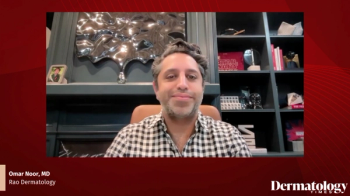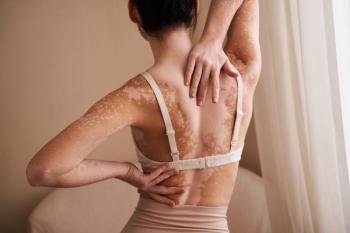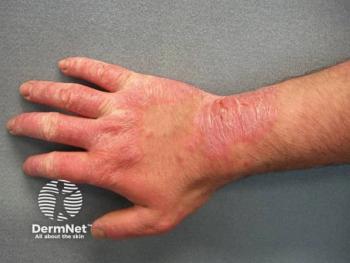
- Dermatology Times, June 2025 (Vol. 46. No. 06)
- Volume 46
- Issue 06
Beyond the Label: How AI Tools Such as SkinGPT Enhance Skin Care Understanding
Key Takeaways
- Haut.AI's SkinGPT and Generative Skin use AI to simulate skincare product effects, enhancing patient education and decision-making.
- SkinGPT addresses the gap in visual communication of product efficacy, offering tangible predictions for diverse skin types.
SkinGPT by Haut.AI uses AI to visually simulate skin care results, empowering inclusive, personalized skin care and bridging clinical data with patient insight.
In a field where visual results often matter as much as clinical ones, a new innovation is reshaping how dermatologists, patients, and brands understand and communicate product efficacy. Haut.AI, a science-driven beauty technology company cofounded by Anastasia Georgievskaya, is at the forefront of this transformation. Through SkinGPT and Generative Skin, Haut.AI brings artificial intelligence (AI) and dermatology together to offer a new and personalized visual experience in skin care evaluation.
The Spark Behind SkinGPT
“The inability to communicate clearly the effects of products, the lack of explainable materials and visuals of what products do, and our desire to address the gap in the data are what led to the creation of SkinGPT,” Georgievskaya said in an interview with Dermatology Times. Georgievskaya, a scientist with a background in biophysics and a passion for beauty, founded Haut.AI with a mission to fuse scientific rigor and AI with the dermatological space.
Initially focused on software for clinical skin studies, the company noticed a crucial gap: the inability to visually communicate the results of skin care products. Although clinical trials yield meaningful data, strict usage rights and a lack of compelling visuals limit their marketing potential.
SkinGPT is an AI-powered tool that allows users to simulate the visual effects of skin care products on real faces, comparable to virtual try-on tools for makeup or hair care. Unlike traditional marketing claims, such as “92% of users saw brighter skin,” SkinGPT offers tangible visual predictions, allowing clinicians and professionals to see potential outcomes on a patient’s face.
Representation and Realism
One of the most compelling aspects of SkinGPT is its inclusivity. Georgievskaya emphasizes that traditional research often relies on limited demographic data, usually skewed toward skin types of younger and White individuals. Haut.AI’s AI models, by contrast, are trained on synthetic data designed to represent a broad range of skin tones, textures, and ages. This inclusivity helps ensure that predictions are accurate and relevant across diverse populations, which is a long overdue development in both dermatological science and skin care marketing.
In the clinical setting, SkinGPT is already proving its value, as dermatology offices and cosmetic clinics can use the tool to preview how patients might respond to various treatments before they commit, including over-the-counter products, prescription therapies, and advanced dermocosmetics. This visual aid enhances patient education, builds clinical trust, and supports better decision-making, much like a simulation of aesthetic procedures does in plastic surgery.
From Ingredients to Impact
Following the success of SkinGPT, Georgievskaya launched Generative Skin, a dynamic digital platform that elevates the concept. Powered by SkinGPT’s core technology, this new tool gives users the ability to interactively explore how specific skin care ingredients affect their unique skin conditions.
Generative Skin features a curated library of active ingredients—from trusted dermatological staples to emerging skin care trends—each supported by peer-reviewed clinical evidence and educational blogs. Patients can “try on” ingredients such as azelaic acid or niacinamide via AI-generated before-and-after visuals. This approach highlights ingredient efficacy and provides a much-needed bridge between clinical science and patient understanding.
Generative Skin is proving especially helpful for chronic condition management, focusing on 6 core skin concerns, including rosacea, acne, and hyperpigmentation. As someone who lives with rosacea, Georgievskaya understands the emotional toll of persistent skin conditions. She described her own experience of tracking flare-ups with personal photos and struggling to objectively assess her progress.
The platform offers a realistic, simulated view of how redness and inflammation could change over time with treatment, enabling patients to better track their results. This helps patients distinguish between temporary changes and actual improvements, potentially reducing the emotional burden that often comes with visible, lifelong skin conditions.
“Just looking at your simulated photos with less redness or more redness can help in understanding that yes, it’s a disease, but it’s still OK and other people also have these concerns,” Georgievskaya said.
This visual clarity is also instrumental in managing expectations. By showing what can realistically be achieved over weeks rather than overnight, Generative Skin discourages premature treatment discontinuation, encourages regimen adherence, and supports clinicians, which is critical for long-term skin health outcomes. Georgievskaya noted that patients are less likely to abandon a regimen prematurely when they understand that progress is gradual and personalized.
Personalized Dermatology
With the initial rollout of 12 core ingredients complete and more on the way, Generative Skin is set for rapid expansion. Georgievskaya is always up to date on the latest trends, especially those emerging in the industry that patients are curious about but often do not fully understand.
“After the launch, we got a lot of feedback. People were sending us emails, and also our collaborators and scientific partners were sending us a lot of great ideas,” she shared.
In response, Haut.AI is adding simulations for ingredient combinations, which can help users identify common mistakes in their routine and understand that mixing too many actives might be doing more harm than good. The platform will also begin addressing environmental factors such as UV exposure and pollution, building a more holistic view of skin health.
“We hope to bring more awareness and education and also introduce little fun moments so you can try all the ingredients from the comfort of your home [without] buying a lot of the products,” Georgievskaya said.
But Georgievskaya’s vision goes beyond SkinGPT and the Generative Skin library. She envisions a future where AI tools in dermatology function similarly to wearable health technology, collecting vast, anonymized data sets to generate predictive insights on skin behavior influenced by stress, hormones, or lifestyle.
Even more intriguingly, she imagines a dermatology-specific AI assistant modeled after ChatGPT, powered by trusted medical expertise and data contributed by licensed professionals. This will allow patients to access accurate answers in a secure and private online space, especially for chronic conditions such as rosacea and acne.
Ultimately, SkinGPT serves as a powerful bridge between clinical science and patient understanding, especially in patients with acne and rosacea. It empowers dermatologists with a tool to communicate clearly, ethically, and inclusively, a step forward in both skin health and digital innovation.
“I’m really excited that technology emerges and helps us manage this, helps us explain what’s going on, gives us some factual data,” Georgievskaya said. “I’m excited for what’s coming in AI next from Haut.AI and other beauty technology companies.”
Articles in this issue
5 months ago
Dermatology Times June 2025 Print Recap6 months ago
Nail Trends That Challenge Clinical Diagnosis6 months ago
Inside IL-17 Inhibitors Advancing Psoriasis CareNewsletter
Like what you’re reading? Subscribe to Dermatology Times for weekly updates on therapies, innovations, and real-world practice tips.



















